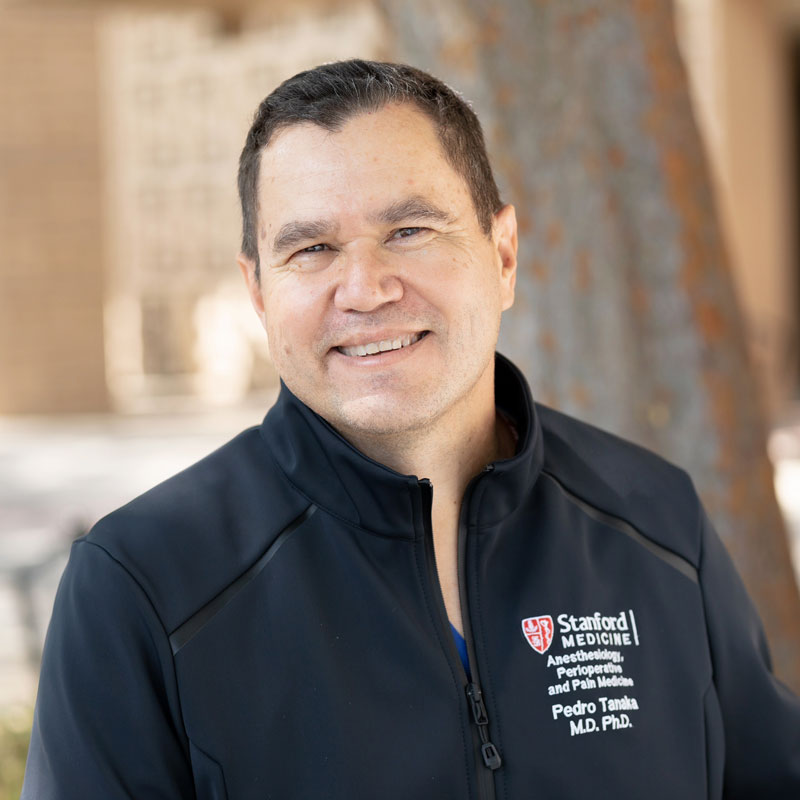Global Engagement Faculty Spotlight

Pedro Tanaka
As part of our Global Engagement Strategy, we want to highlight our Global Community right here within the Department. It is an honor to get know Dr. Pedro Tanaka. Dr. Tanaka is a Clinical Professor of Anesthesiology, Perioperative and Pain Medicine. He is also our Vice Chair of Diversity, Equity, and Inclusion and Associate Program Director for the residency program. We are grateful he took the time to share a part of his story.
Where did you grow up?
Curitiba, Brazil
How do you think your upbringing influenced your world view?
Brazil is a nation that boasts a diverse blend of cultural influences, stemming from indigenous, African, European, and Asian roots. Having grown up in the southern region, I was exposed to a prevalent European and Japanese presence. Personally, my ethnic background encompasses Italian, Polish, Japanese, and caboclo (fisherman) ancestry. Brazilians are known for their fondness of music, dance, and soccer, and possess a remarkable passion for life that is celebrated with joy and creativity. While Brazil holds the distinction of being the world’s largest Catholic nation, it is also home to various other religions that played an essential role in shaping my values and sense of community. With its continental size, Brazil’s complex and multifaceted nature is evident, including its stark socioeconomic disparities, which are highlighted by factors such as poverty, unemployment, and access to education and healthcare. As someone who grew up in a low middle-class household, these economic realities were apparent to me from an early age.
How is healthcare different in other countries where you have lived/visited/worked?
In Brazil, healthcare is considered a constitutional right and is provided by both public and private healthcare systems. The public system, known as the Unified Health System (SUS), is free of charge and available to all Brazilians, including foreigners. While access to healthcare is universal in theory, the reality is that there are significant regional and socioeconomic disparities in access to care, with those living in poorer areas having less access to healthcare services.
What lesson or insight would you share with others that you feel could improve the care of our patients in the USA?
Social and economic factors beyond the scope of healthcare significantly affect patients’ health outcomes. Addressing social determinants of health, such as poverty, food insecurity, and housing instability, can undoubtedly enhance patient health and lower long-term healthcare costs.
In your opinion, how does a global perspective strengthen the care delivered to patients?
At a personal level, a global perspective brings awareness to the diversity of cultural beliefs, values, and healthcare practices. Understanding and respecting these differences can help us deliver more culturally competent care and improve patient satisfaction and health outcomes.
Have you gained unique insights or experiences, along your journey? If so, how have these informed your practice?
We have successfully trained over 1000 anesthesiologists in airway management, and our work has led to a national adoption of our methods. For a decade, I have hosted over 200 Brazilian anesthesiologists, mainly residents, who have visited Stanford and gained exposure to our different culture and approach to patient care. This experience has allowed them to bring back valuable lessons applicable to their institutional context. The support and dedication of our colleagues in the department have been instrumental in achieving this, and I am grateful for their commitment.
What has been your most challenging or surprising lesson learned when engaging with other cultures?
I think for me what was most challenging was to recognize and understand the nuances and complexities of cultural differences. It can be easy to fall into assumptions and stereotypes when encountering a new culture, and this can lead to misunderstandings and miscommunication.
What has been the most amazing thing you have seen while traveling to another country?
The people!! Wonderful, kind, and committed to their values.
Do you have any final thoughts, stories, or ideas you would like to share?
True diversity extends beyond the recruitment cycle and promotional photos on social media. If the aim of diversity is to enhance patient care, then it’s crucial to create an environment where all trainees, staff, and faculty feel supported and empowered to learn and work together to their full potential. Achieving this goal requires a commitment to diversity that is woven into the fabric of our department’s identity and cannot be separated from it.
Thank you, Dr. Tanaka. It is an honor to call you a colleague and member of our global community!
